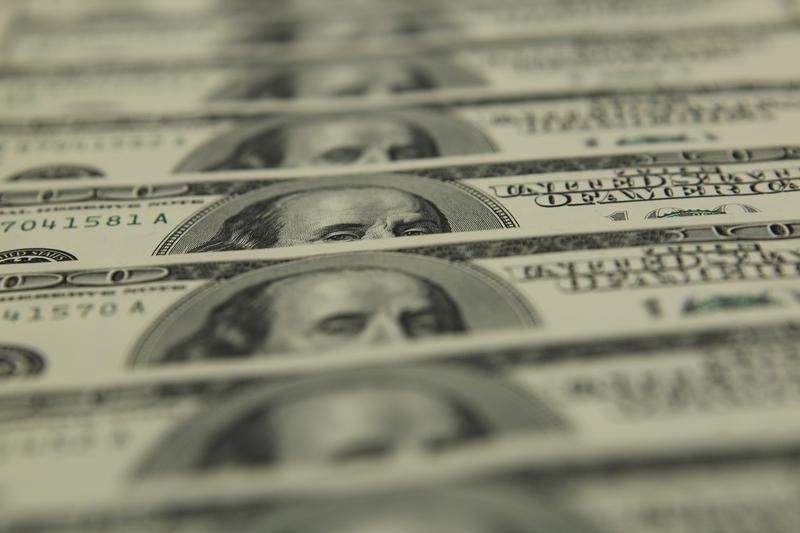Gold prices cool after hitting over 2-week high on Fed independence fears
(Bloomberg) -- The U.S. dollar tumbled from a record high, suffering its worst fall in more than four years, after a California stay-in-place order curbed greenback buying amid fears the world’s largest economy is headed for a recession.
The Bloomberg Dollar Spot Index slipped as much as 1.8%, pushed lower by California Governor Gavin Newsom ordering all of the state’s 40 million residents to go into home isolation starting Thursday evening. That marked the most stringent U.S. effort yet to curb the spread of the coronavirus, raising the likelihood of an economic shutdown akin to those seen in Asia and Europe.
It comes on the back of repeated efforts by global policy makers to stem the previously rampant dollar’s advance, with options pricing still indicating bullish sentiment among traders for the currency. The Federal Reserve established temporary liquidity-swap lines with nine additional central banks, including Australia’s and South Korea’s, to ease the dash for dollars.
“The dollar is getting sold partly on concern that if California and some other big states follow, unemployment would rise dramatically and push the U.S. into some place between a recession and a depression,” said Mark Grant, chief global strategist at B. Riley FBR Inc. “It’s a knee-jerk reaction of people thinking ‘gee, we didn’t think the U.S. could get into this kind of trouble -- but perhaps they can’.”
The dollar gauge slumped from a record high after it rallied more than 8% over the last eight sessions. Demand for the world’s reserve currency had jumped amid a rush for cash in anticipation of a prolonged pandemic, with there being a substantial liquidity mismatch between global demand for U.S. dollars and those on offer.
The Australian dollar rose as much as 4.2% to lead Group-of-10 currency gains against the greenback, while the pound climbed 3.4% in its biggest advance since October 2008. The Bloomberg dollar gauge recovered some ground to be 0.9% lower by midday in London.
“The softer dollar tone is giving some respite to many badly beaten-up currencies,” said Mitul Kotecha, senior emerging-markets strategist at TD Securities. “It’s early days to say this is a more pronounced dollar reversal,” he said, adding that demand for the greenback remains high.
Options prices suggest the dollar could get back on track in the months ahead. Shorter and longer-term risk reversals, a barometer of market sentiment, are bullish on the greenback against most of its major peers, apart from havens the yen and Swiss franc.
“While markets have stabilized and some oversold currencies like the pound are recovering, we advise caution given that next week’s global PMIs could underwhelm the already gloomy market expectations,” said Valentin Marinov, head of G-10 currency strategy at Credit Agricole (PA:CAGR) SA in London. “The Covid-19 pandemic is not yet under control. The mad dash for dollar cash could therefore resume.”
Unemployment Concerns
The dollar weakening came as Treasuries rallied following a New York Times report that the Trump administration is asking state labor officials to hold off on releasing precise figures for unemployment until the federal government issues national totals. The report added to speculation of a sharp increase in U.S. unemployment benefits.
Goldman Sachs Group Inc (NYSE:GS). estimates such claims are poised to surge to a record 2.25 million this week, according to an analysis of preliminary reports across 30 states. That is more than triple the prior peak of 695,000 in 1982.
“The economic damage of the coronavirus is going to be potentially greater than the medical damage to the United States,” said Tony Farren, a managing director at broker-dealer Mischler Financial Group in Stamford, Connecticut.
